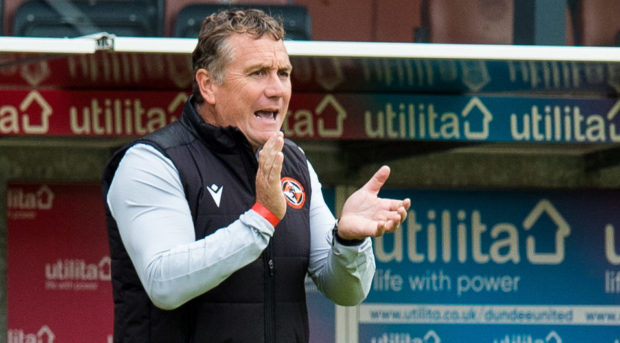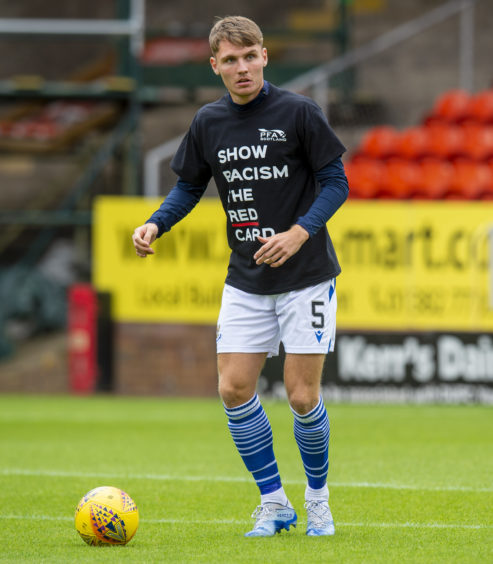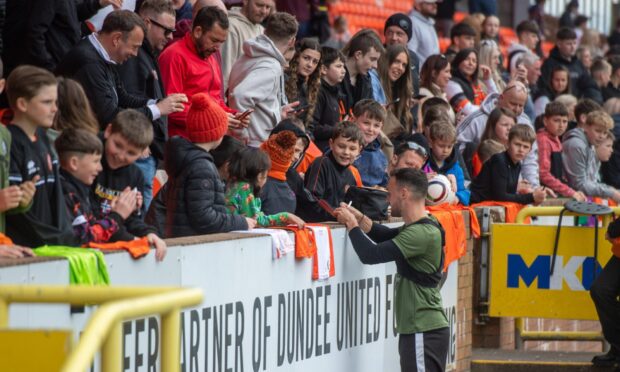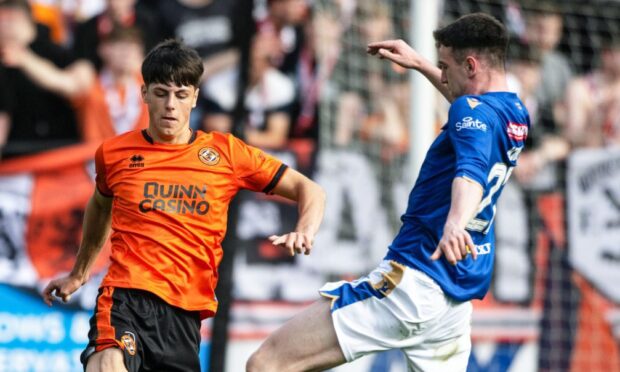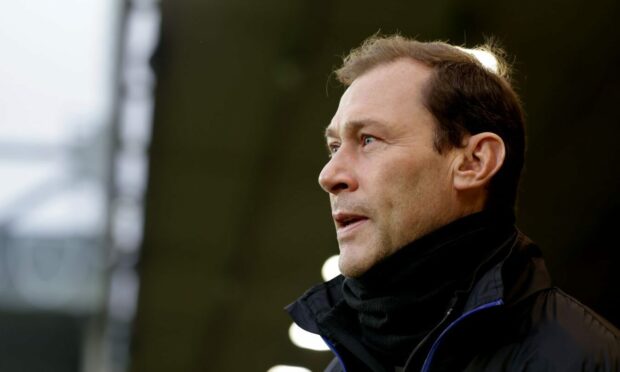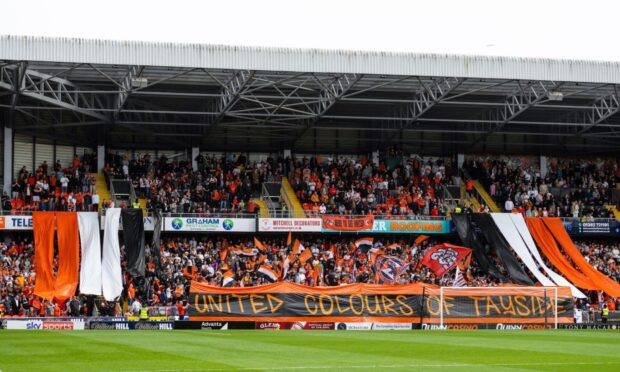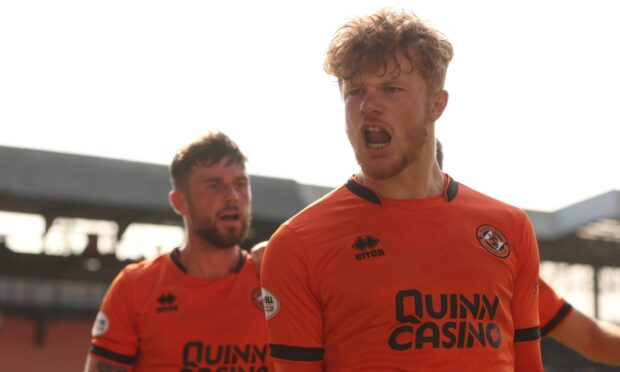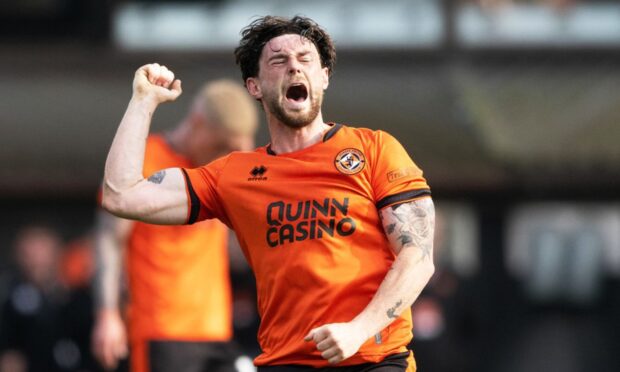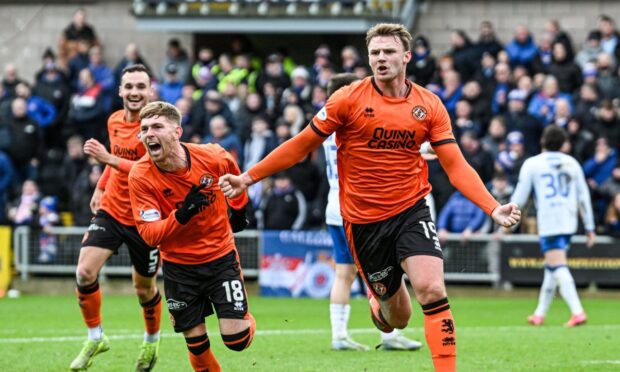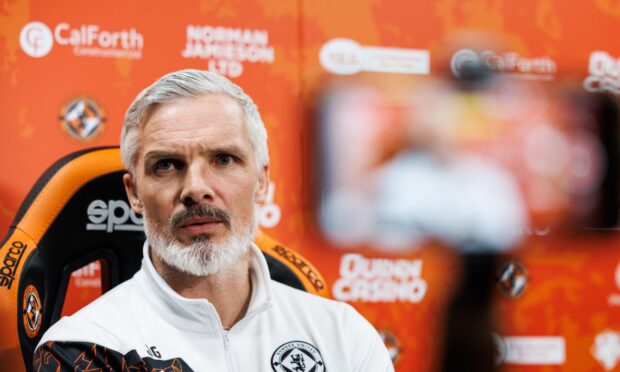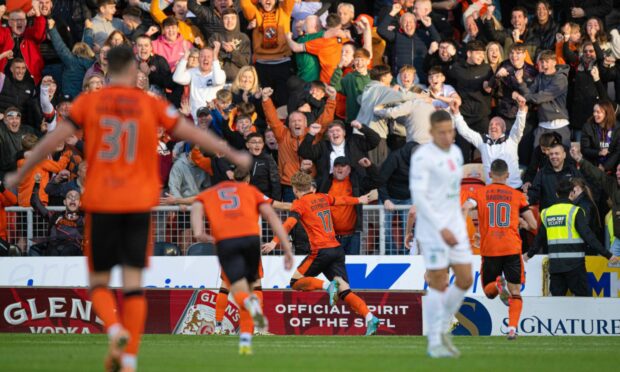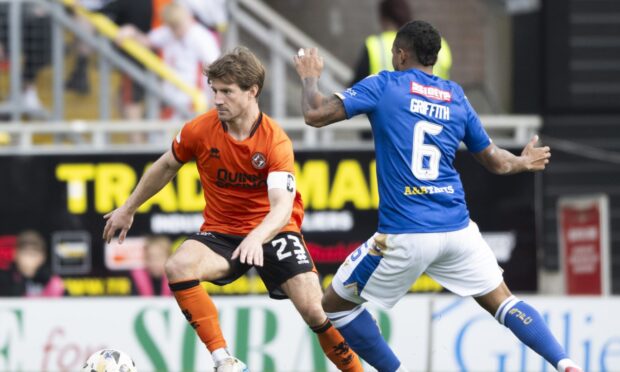Detail. Micky Mellon said it himself.
That’s what cost his Dundee United side victory on their return to the Premiership.
Mellon’s Tangerines more than proved their ability to compete at the top level during a first 45 minutes against St Johnstone that offered plenty of positives.
They were much slicker than the Perth side (an established Premiership outfit, let’s remember), not to mention more aggressive and more street smart.
They took the lead early on when Saints’ Liam Craig was penalised for inadvertently blocking a Liam Smith effort with his arm, leaving Nicky Clark to notch from 12 yards.
When Callum Davidson’s team were subsequently reduced to 10 men before the break, it seemed the game was there for United to seize.
But the Tangerines’ second half showing was as tentative as their first half performance was swaggering – and the fact United’s post-interval slump came when they had a numerical advantage was a huge disappointment.
So why did it happen?
The devil, as United’s manager suggested, was in the detail.
“When you go a goal up and the opposition goes down to 10 men and you have played the way we had done you would expect, as professionals, to see it out,” said Mellon, fresh from his first taste of Scottish dugout action.
“We just switched off in one moment of detail that we have worked very hard on. The players will know that. We were a wee bit loose when the ball got turned over and we get punished for that.”
Mellon, having been round the course plenty of times both on and off the pitch in England, is shrewd enough a manager to know singling out “loose” players at this early stage of his tenure at Tannadice will do him no favours.
Especially when, on Saturday, Lawrence Shankland was particularly worthy of the tag.
United’s talisman was uncharacteristically quiet in the first half against Saints.
Perth captain Jason Kerr was tasked with sticking to Shankland like glue and did so effectively, limiting the Tannadice hit man to a bit part in the game before the break.
However, with United a goal and a man up after Michael O’Halloran’s sending off, last season’s top scorer emerged for the second half looking determined to make an impact in front of goal.
Shankland’s keenness to open his top flight account was clear to see.
Instead, after fluffing a couple of chances, the striker appeared to tire 10 minutes in and, with Saints in possession, clearly gave up on chasing possession from Saints’ Ali McCann, despite his manager’s audible encouragement from the technical area.
With Shankland out of gas, McCann, unchallenged, found Kerr, who then found Danny McNamara, whose cross led to the botched Mark Connolly clearance lashed home by Liam Craig for the short-handed Perth side’s equaliser.
Instructions were given by Micky Mellon. Instructions weren’t followed. A goal was coughed up.
At this level – even against a weakened side – such things can be decisive.
“Credit to St Johnstone, they dug in with 10 men and then we have to go and break down a block,” said the United boss.
“We kept prodding and poking away at it but we just weren’t able to undo a packed block.
“But we will learn our lessons and move on. That’s what it’s about, we are in a transition, we have moved up a division.
“There are a lot of players who are playing at this level again for the first time in a long time or playing for the first time, as well as having a 17-year-old (Lewis Neilson) making his debut.
“We will gather the positives and move on to training next week and be ready to move the club on again.”
Victorious teams never talk about taking – or gathering – the positives from games.
Instead, it tends to be a phrase beaten managers and players use to deflect from negatives.
United weren’t beaten on Saturday but, at full time, the 1-1 draw didn’t feel like a good result.
Having played against 10 men for a full half, that’s understandable.
But as the dust settles, the clearer it should become that there are plenty of reasons to be cheerful for the Tangerines.
From kick-off until half time, United looked like a serious Premiership side. They were first to every ball. They were sharp, drilled and positive.
Their movement was like clockwork. Their shape was well defined. They knew exactly what they were doing.
There were issues – Shankland was far too quiet for somebody so potentially influential, while their second half performance was poor.
But, as Micky Mellon said, it’s all about detail.
The fact United fans can look at their side and say there are fine margins between the point they won on day one and the three they will be looking for next weekend against Motherwell ought to be heartening.
The Tangerines, as a club, are back where they belong.
If they can replicate their first half performance against Saints, they’ll soon be picking up the wins that will help them stay there.
